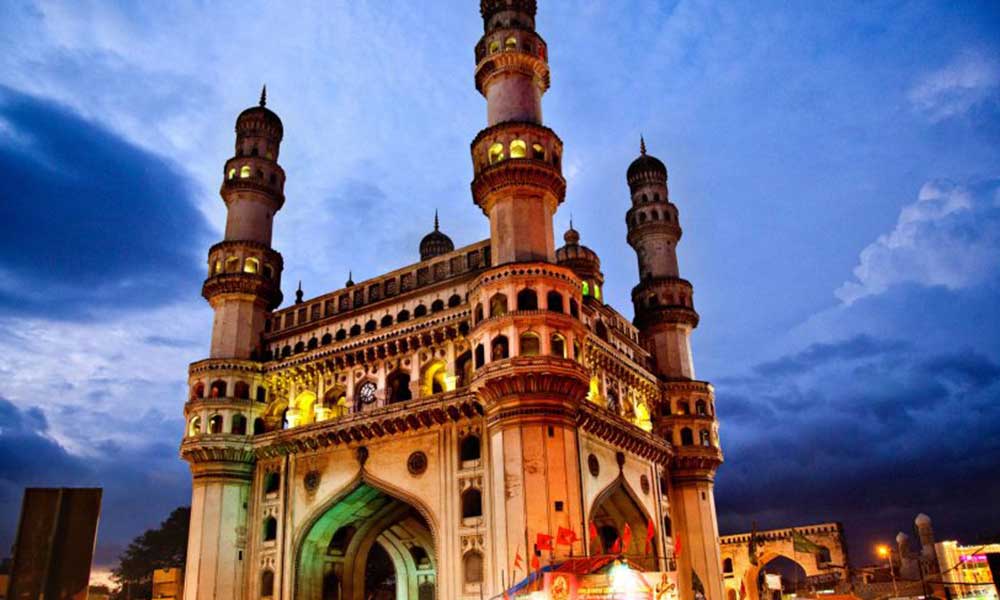Hyderabad has many famous monuments, significant for their architectural designs, historical value and rich heritage.
Many erstwhile rulers of Hyderabad built these since the inception of the city in 1591. You can visit these four most iconic monuments of Hyderabad using several Taxi services in Hyderabad:
1 – Golconda means a round shaped hill. It was initially called Mangalavaaram/Mankal, named after Hindu Goddess Mangala Devi. Ram Dev Rao, a shepherd, either discovered or built a temple devoted to her during 1080 CE here. A fort was later built here by the Kakatiyas rulers (1163–1323) and was named after the round hill. The fort next came under the Bahmani Sultanate in 1364. Under them, Golkonda rose to glory.
But it was Sultan Quli Qutb-ul-Mulk who gave it state prominence when the Bahmani rule ceded to the Sultanate in 1538. Over the next 62 years, the mud fort was transformed into a magnificent granite fortification, 5 km in circumference. Golconda became the Sultan’s seat of government till the capital was shifted to Hyderabad in 1590. Later, the fort came under an eight-year-long siege that led to its fall to Mughal Emperor Aurangzeb. The fort finally came to ruins in 1687. The fort was declared a monument of National importance under the Ancient Monuments and Archaeological Sites and Remains Act, 1958 by the Archaeological Survey of India (ASI).
2 – Char Minar was built in 1591 by the founder of Hyderabad, Sultan Muhammad Quli Qutb Shah. It was built on a historical trade corridor between the Golkonda markets and the port city of Machilipatnam. It is famous for its Indo-Arabian or Indo-Islamic architecture style, with a unique Persian touch.
Renowned Persian architects were invited to lay out a city around this structure. So, the city of Hyderabad came up with various gateways to the city: Char Kaman, Machli Kaman, Kali Kaman and Sher-e-Batil-Ki-Kaman. The Charminar itself was intended to serve as a Mosque and Madrassa. The Charminar was also considered of National importance under the Ancient Monuments and Archaeological Sites and Remains Act, 1958.
3 – Chowmahalla Palace belongs to the Nizams of Hyderabad. It was started to be built by Salabat Jung in 1750 but was completed during the reign of Afzal ad-Dawlah, Asaf Jah V between 1857 and 1869. The Shah of Iran’s palace inspires this palace. The palace initially spread over 45 acres but now only 12 acres remain. It still belongs to the Nizam’s predecessors. It was awarded the prestigious UNESCO Asia Pacific Merit award for cultural heritage conservation on 15 March 2010.
4 – Qutb Shahi tombs are masterpieces of Indo-Islamic art and architecture in Southern India. They are the memorial tombs of rulers of the Qutub Shahi dynasty (1543 to 1672), except the last Qutb Shahi sultan. After the Qutub Shahi reign, the tombs were forgotten until Sir Salar Jung III restored them at the beginning of 19th century. As a part of this restoration, it was turned into a beautiful tomb-garden. It became famous for a fusion of Persian, Pashtun and Hindu style tombs with fine stone carvings. In more recent times it came under the Heritage Precincts of the Hyderabad Urban Development Authority (Now HMDA) Zoning Regulations, 1981 (Regulation 13). For affordable and reliable rides to these places take Hyderabad car rentals.





